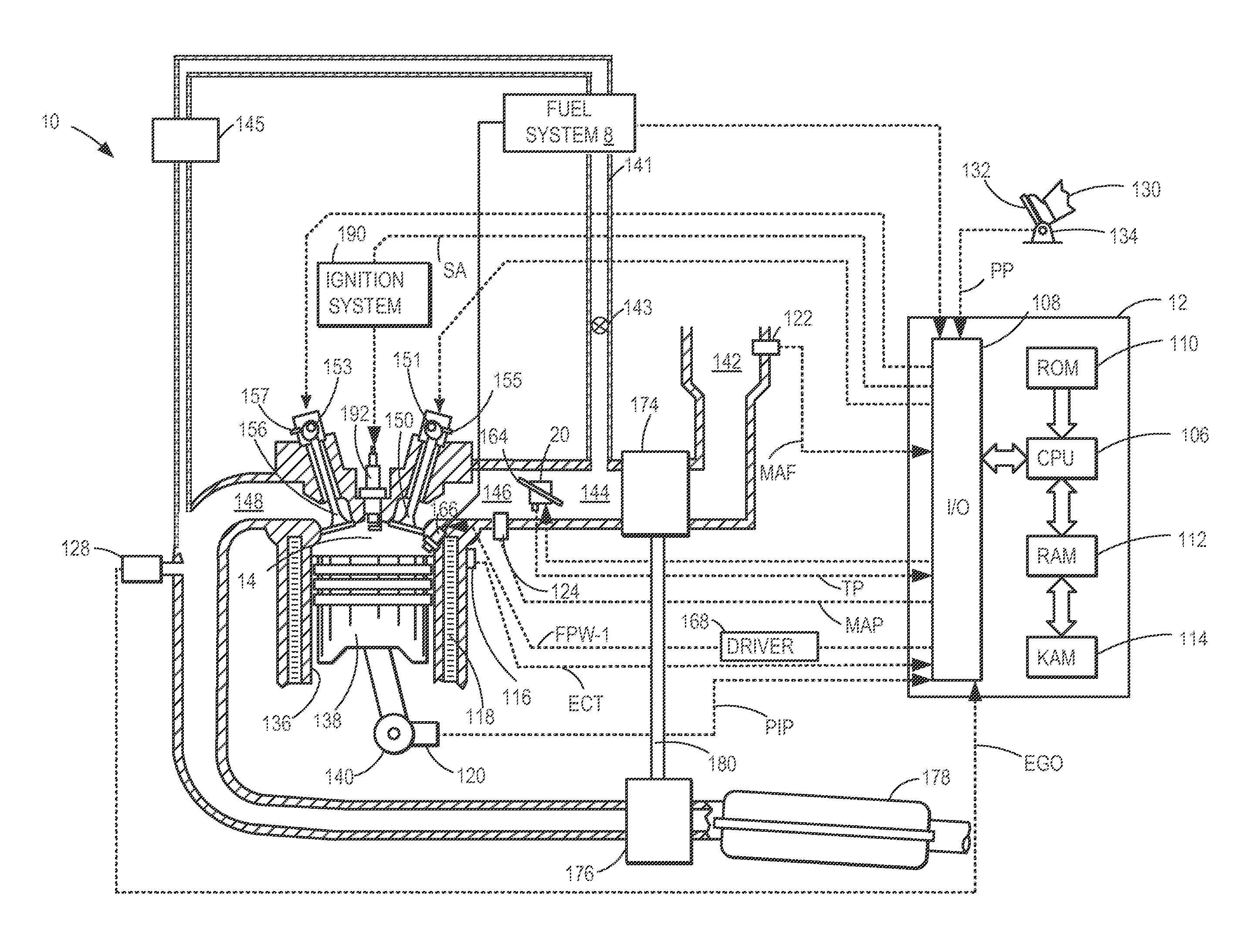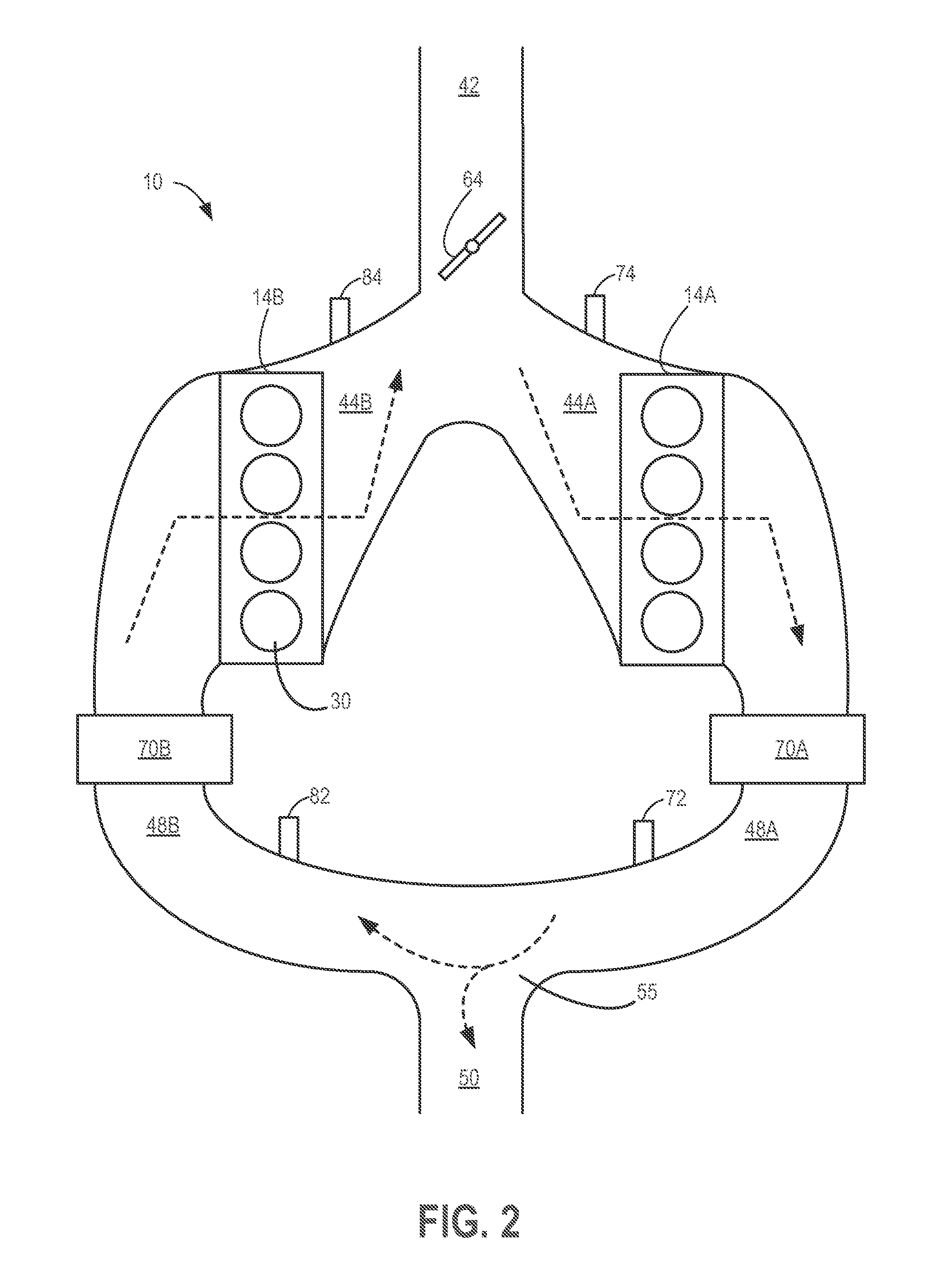Variable valve timing for cylinder deactivation
a variable valve timing and cylinder technology, applied in the direction of process and machine control, electrical control, instruments, etc., can solve the problems of net flow between the intake and exhaust manifold, tailpipe emissions and catalyst efficiency, fuel economy penalty, etc., to improve engine performance, increase positive or negative valve overlap, increase negative valve overlap
- Summary
- Abstract
- Description
- Claims
- Application Information
AI Technical Summary
Benefits of technology
Problems solved by technology
Method used
Image
Examples
Embodiment Construction
[0015]The following description relates to systems and methods for adjusting intake and / or exhaust valve timing for a first group of cylinders on a first engine bank and a second group of cylinders on a second engine bank (FIGS. 1-3) to enable selective cylinder deactivation. A controller may be configured to perform control routines, such as those shown at FIGS. 4-6, to direct substantially less flow, in the same direction, through an inactive bank as compared to an active bank during some operating conditions. During other conditions, the controller may direct combusted exhaust gas from the active bank through the inactive bank, in the opposite direction. As shown at FIG. 7, the controller may also detect exhaust leaks in the inactive bank during the reversed flow based on changes in monitored air-to-fuel ratio. By adjusting the valve timing of the inactive bank based on an exhaust air-to-fuel ratio of the inactive bank, cylinder deactivation benefits may be achieved while maintai...
PUM
 Login to View More
Login to View More Abstract
Description
Claims
Application Information
 Login to View More
Login to View More - R&D
- Intellectual Property
- Life Sciences
- Materials
- Tech Scout
- Unparalleled Data Quality
- Higher Quality Content
- 60% Fewer Hallucinations
Browse by: Latest US Patents, China's latest patents, Technical Efficacy Thesaurus, Application Domain, Technology Topic, Popular Technical Reports.
© 2025 PatSnap. All rights reserved.Legal|Privacy policy|Modern Slavery Act Transparency Statement|Sitemap|About US| Contact US: help@patsnap.com



